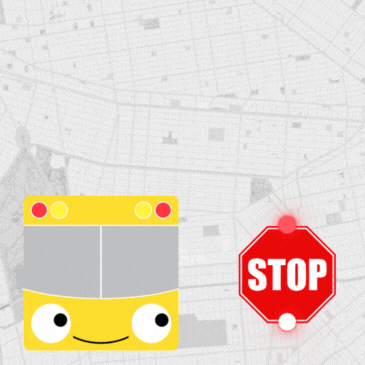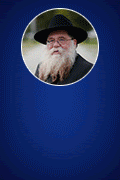
Simchas Torah – Dancing with Love Beyond the Luchos
There is a special kind of joy that bursts forth on Simchas Torah —a joy that cannot be contained by words or intellect. After the awe and solemnity of the High Holidays, after being inscribed and sealed for a sweet new year, we now rejoice not merely in victory, but in mission. We are not drifters in life. Every Jew has a divine calling, a unique role to play in revealing G-dliness in the world. And that mission, that map of purpose, is found in one place — the Torah.
But what’s extraordinary is that the Torah we celebrate is rolled up and closed. We don’t sit and learn. We dance. And not only scholars dance — every Jew, young and old, learned or simple, is called to the Torah. Every Jew receives an Aliyah and blesses the Torah. Why? Because the Torah is not the private domain of the scholar. It is the inheritance of every single Jew. On this day, the Torah belongs equally to all.
That is why we dance. Not for our achievements, not for our understanding — but for the sheer joy that G-d chose us and gave us His Torah as a gift. And the Rebbe teaches that these 48 hours of dancing — Shemini Atzeres and Simchas Torah — can draw “buckets and barrels of blessings for the entire year.” So we dance with all our strength, celebrating the simple, infinite bond between G-d and His people.
The Last Rashi — The Eulogy That Defines Everything
On Simchas Torah we also complete the yearly reading of the Torah. The final verse reads:
“And all the strong hand, and all the great awe, which Moshe performed before the eyes of all Israel.”
Rashi, the great Torah commentator, reveals something astonishing. He explains that the most important act Moshe did “before the eyes of all Israel” was breaking the Luchos, the Tablets of the Ten Commandments.
The Rebbe asks: How could that possibly be a compliment? Couldn’t the Torah find a better way to conclude the life of Moshe Rabbeinu than with the destruction of G-d’s most sacred gift? Moshe led the Jews out of Egypt, split the sea, fed them manna, and gave them the Torah itself — yet the Torah ends by praising him for breaking it?
The answer reveals the deepest joy of Simchas Torah.
When Moshe came down from Mount Sinai carrying the Luchos — G-d’s handwritten covenant — he found the Jews worshipping a golden calf. The nation that had just heard G-d’s voice declaring “I am Hashem your G-d” had betrayed Him. G-d declared He would destroy them. At that moment, Moshe had to make a choice: defend the Torah, or defend the people.
Moshe, the ultimate teacher of Torah, chose instead to defend the Jews. He shattered the Luchos, as if to say, “There is no contract yet; You cannot punish them.” Moshe risked his entire identity as “Moshe Rabbeinu” — the giver and teacher of Torah — for the sake of saving his people.
And G-d said, “Thank you for breaking the Luchos.”
That, says Rashi, is the highest praise — and that is how the Torah ends. The Torah itself concludes with the story of how Moshe chose the Jewish people over the Torah itself, because that is the deepest truth of Torah: its whole purpose is for the Jewish people.
Dovi’s Story — A Sicha that Broke Through
My dear friend Dovi, a Chabad shliach in a far corner of Asia, once told me a story that captures the essence of this Rashi. His Chabad House serves as a haven for Israeli trekkers — soldiers and seekers who wander the world to “find themselves.” There’s always a warm welcome, coffee brewing, Shabbos meals, and of course — Tefillin.
One regular visitor, whom we’ll call Ohad, would come daily to hang out — but he refused to put on Tefillin. Not once. When pressed, he snapped, “You think I’m ignorant? I studied in a top yeshiva in Bnei Brak. I know it all — it’s all nonsense, politics, and money.”
One night, when Ohad came by alone, Dovi asked if he’d like to learn instead. Ohad’s face lit up — “Sure, I love to learn.” Dovi pulled out Likkutei Sichos, Volume 34, the Rebbe’s explanation of the last Rashi in the Torah. Together they learned about Moshe breaking the Luchos — and how the Rebbe described that moment as Moshe’s greatest achievement.
When Moshe saw the Jews sinning, he didn’t protect the Torah; he protected the Jews. He broke the Luchos to save them. And G-d thanked him. The Rebbe explained that this act of breaking — of putting people before perfection — was the truest expression of love. It was the Torah’s own way of saying, “I exist for you.”
Dovi watched as Ohad’s expression softened. When they finished, Ohad asked quietly, “Are there more Sichos like this?” They continued learning for hours. Finally, Ohad turned to Dovi and said, “This is not the Judaism I ran away from. For this Judaism — I’ll be here tomorrow morning to put on Tefillin.”
That night, the Rebbe’s words — the same last Rashi of the Torah — broke through years of bitterness. One Sicha, one glimpse of G-d’s love for His people, changed a heart.
The Torah’s Greatest Joy
When we dance on Simchas Torah, we are not celebrating intellect or knowledge. We are celebrating the love story between G-d, the Torah, and the Jewish people. The Torah itself ends by testifying that its greatest glory was not its revelation on Sinai, but its breaking for the sake of saving a Jew.
This is the Torah we dance with — not the tablets of stone, but the heart of Moshe, the heart of the Rebbe, the heart of Hashem Himself — all beating with unconditional love for the Jewish people.
That is why the Torah is rolled up when we dance. Because what matters is not how much we know, but who we are — Jews whom G-d loves infinitely.
This Simchas Torah, as we dance and sing, let us remember that love. Let’s dance for Moshe who broke the Luchos, for the Rebbe who taught us to love every Jew without limit, and for Hashem who still says, “Thank you for breaking them — because through that, you saved My children.”
For 48 hours, let our feet become our prayers, our joy become our faith, and our dancing draw down barrels and barrels of blessings for the entire year.
L’chaim — to a Torah that loves, to a people who dance, and to a year of endless Simcha and redemption.
Have a dance of Yomtov with the Torah and G-d,
Gut Yomtov
Rabbi Yosef Katzman














